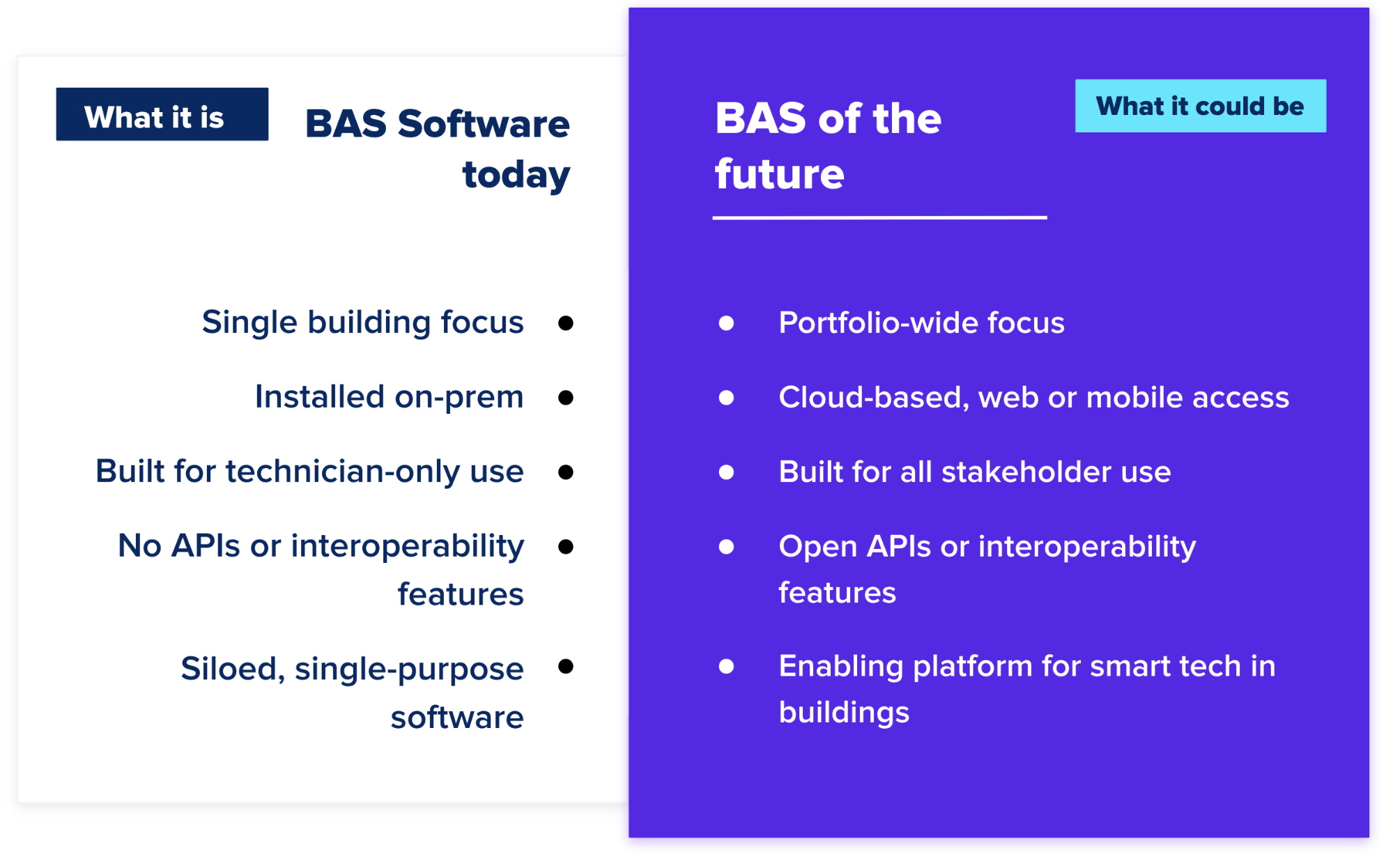Rethinking BAS software
(that was
built for a world that no longer exists)

Rajavel Subramanian, Co-Founder and Head of Product at Facilio
Facilio Inc.
|
January 2021 |
[an error occurred while processing this directive] |
|
Rethinking BAS software (that was
built for a world that no longer exists) |
 Rajavel Subramanian, Co-Founder and Head of Product at Facilio Facilio Inc. |
| Articles |
| Interviews |
| Releases |
| New Products |
| Reviews |
| [an error occurred while processing this directive] |
| Editorial |
| Events |
| Sponsors |
| Site Search |
| Newsletters |
| [an error occurred while processing this directive] |
| Archives |
| Past Issues |
| Home |
| Editors |
| eDucation |
| [an error occurred while processing this directive] |
| Links |
| Software |
| [an error occurred while processing this directive] |

The real estate industry is in the middle of a
colossal paradigm shift in the way we operate buildings. Property owners and
operators have had to constantly realign strategies to meet changing occupant
needs and rely on data-driven insights to inform these key decisions in
operations. The constraints imposed by the pandemic has made it even more
crucial to have real-time building information readily accessible and therefore
has put BAS and its many shortfalls in the spotlight today. While building
automation has been hallmarked for years by outdated software, lack of openness & an obsolete business
model, property stakeholders have fully woken up to the problems in the BAS
industry only now. The realization—that the traditional BAS software in
buildings today is unsuited to access, or share data in real-time, doesn’t
interoperate with any other systems, and is questionably old school—has finally
hit us hard.
In an alternate world, BAS could be the core
driver of real estate operations and portfolio-wide performance. It could be
the data powerhouse that helps derive key operational insights in real-time. It
could be particularly useful to drive visibility for key stakeholders into their entire
operations, and inform strategic decisions. It could help devise
tactical measures, pave for new use case deployments or performance
optimizations in weeks (versus months today).
Most importantly, it could have embraced
technological advancements in cloud, IoT & big data analytics to transform
itself into uncovering all of the above possibilities and more. Sadly, its
service-heavy business model has always put a lock on incentivising upgrades
and as a result BAS software hasn’t seen innovation in years. To date it’s
limited to a narrow scope—of equipment controls & alarm management—and is
rarely useful to anyone other than a building controls technician, despite its
sizable capital investment.
Furthermore, it is hard to imagine any
software or system today that works seamlessly with BAS for data access or
control based automation. Anyone who has attempted to do any efficiency-based
initiative—real-time energy management, analytics, automated billing, new
sensor deployment in buildings, to name a few—can relate to the full extent of
this problem. It involves painful building-wide system integration or stitching
together complex manual workflows that end up adding to the existing building
management silos. While it may even seem feasible to do this in one building
today with the help of your BAS vendor or contractor, you can’t even start to
imagine scaling this across your portfolio.

In this post-pandemic world—with entirely new
occupant health and safety use cases that demand integration with smart sensors
& equipment—BAS software in its
current form is greatly at the risk of becoming redundant.
In reality, it’s not impossible or even too
hard to turn the BAS data lock-in problem around. Most BAS networks support
IP-based open standard protocols like BACnet/IP, Modbus TCP/IP, OPC, etc. Using
edge technology, accessing real-time building information from these networks becomes
pretty straightforward. Combine cloud technology with this and it unlocks new,
unexplored potential for BAS. Take supervisory controls for building systems
that are traditionally on-prem software and operate at a single building level.
It is effortless to imagine these functionalities to work across your entire
portfolio from one place with the help of cloud-based platforms. Much before
enabling supervisory controls across buildings, this approach lays the foundation for data-driven operations and
that’s what makes it the most significant shift in this direction.
Imagine having historic BAS data collected
over the years and across buildings on a cloud-based platform. What if it can
be normalized to a common data model and naming standard. Imagine using the
power of analytics over such unified data sets. Consider deriving insights and
sharing visibility into building operations for key stakeholders. Imagine the
same platform also enables data sharing with other applications that need this
data. That solves all the pains of BAS system integration—something that is
proven to be a bottleneck for tech adoption in buildings. Imagine having a CMMS
system that seamlessly uses data surfaced from the BAS and enables maintenance
to be performed based on the equipment condition besides periodic schedules.
Or, a tenant servicing system that automatically adjusts HVAC schedules or
overrides setpoints in a building based on occupant requests. The possibilities that this approach creates are limitless
and lucrative in meeting the evolving operational demands of large
organizations.
Over the past decade or so, building operators
who have attempted to address the BAS problem have had to build a solution
themselves with the help of IT solutions vendors, experienced MSIs, or
automation vendors. Often these solutions were based on the same outdated BMS
technologies, extending the same functionalities but for multiple buildings,
took considerable time and cost a lot to deploy. What’s worse is quite often
these solutions didn’t even get deployed across portfolios because of the same
teething problems like lack of openness, vendor lock-in, etc. reinforcing the
need to make a transformational change to building automation of today.
And frankly, the industry isn’t looking up to
the BAS incumbents to bring about these
innovations. While most of the big automation vendors have launched platforms
and solution offerings that attempt to solve this, the property operations
industry isn’t flattered enough to believe these companies
to have suddenly prioritized customer needs at the expense of disrupting their
own service-based business models.
With the commoditization of IoT, cloud, &
analytics technologies, however, things are taking a positive turn. It’s not
too late to leverage the full potential of existing BAS.
This is a game-changer with respect to the role of software in building
automation & operations—a movement that is accelerated with growing cloud
and IoT startups across the globe. The possibilities we discussed in this
article are exciting and we’re only just starting to scratch the surface here.
Once the data from building automation systems and sensors become readily
available, an innovation barrier is lifted for real estate companies across
asset classes to build solutions for countless needs in various operations and
maintenance (O&M) contexts.
It is
with this grand vision that Facilio has been building a cloud based O&M
data platform that allows real estate portfolio owners and operators to
consolidate data across building systems and optimize operations in various
contexts. Learn more here about how Facilio can help solve the
problem of BAS and unlock efficiencies in building operations for your
portfolio.
[an error occurred while processing this directive]
[Click Banner To Learn More]
[Home Page] [The Automator] [About] [Subscribe ] [Contact Us]